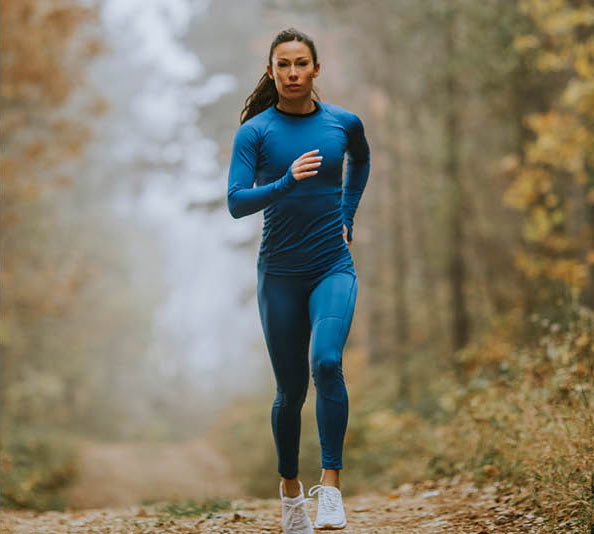Quite frequently, I have a conversation with many of my patients that is relevant to all people who are looking to improve their health or quality of life. The thrust of the conversation is simple: incorporate the little things, such as healthy daily habits, that may save you many headaches down the road when it comes to your health.
As a vascular specialist and surgeon, the essence of the old, ‘an apple a day keeps the doctor away’ expression rings true in my area of medicine. However, problems can arise when patients have not been eating their symbolic apple. In such cases, the chances of unwanted complications may increase. This article provides a brief overview of some vascular conditions and some information about a few good ‘apples’ to support vein, vascular, and circulation health.
Your Veins, Circulation, and You
Every now and again, you may experience heaviness in your legs while at rest, while walking, climbing stairs, or doing some other physical activity. You may also have experienced a feeling of coldness in your lower leg or foot, numbness, or even some swelling in the same area. These may be symptoms related to poor blood circulation caused by chronic venous insufficiency (CVI) or lower extremity peripheral arterial disease (PAD). The good news is that there are excellent methods to reduce the prevalence of these symptoms. But first, it is important to understand the tell-tale signs of CVI and PAD so that your doctor can assist you with the necessary treatment, therapy, or lifestyle changes to continue to promote healthy veins and circulation that meet your specific needs.
Signs and Symptoms of Chronic Venous Insufficiency and Related Varicose Vein Disease
Chronic venous insufficiency (CVI) is marked by the inability of the veins to bring the blood back to the heart when circulating throughout the body’s vascular system. With CVI, the inability of the veins to bring blood back to the heart is often due to damaged valves in the veins. At an earlier stage, symptoms of CVI may include leg aching, leg heaviness, and night cramps. At a more advanced stage, a common manifestation of CVI is the presence of varicose veins, which are enlarged, twisted veins of the legs, that may appear blue or purple in color. Varicose veins may be painful and uncomfortable, particularly while standing. In even more severe cases, CVI may also lead to discoloration and inflammation of the skin and open wounds near the ankles, known as venous leg ulcers (VLU), for which definite medical attention is required.
Signs and Symptoms of Lower Extremity Peripheral Arterial Disease (PAD)
In contrast to CVI, lower extremity PAD is primarily caused by atherosclerosis, where calcified fatty deposits build up in the arteries, narrowing them and reducing blood flow. The hallmark symptom of PAD is called intermittent claudication, in which the patient experiences pain, cramping, or heaviness in the legs or buttocks during physical activities like walking or climbing stairs. In the case of intermittent claudication, the symptoms typically subside with rest. Other key symptoms of lower extremity PAD include leg weakness or numbness, coldness in the lower leg or foot, wounds or ulcers in the lower extremities, changes to skin color or texture, and a decreased pulse in the affected areas. As noted above, patients experiencing wounds or ulcers in the legs or feet should seek immediate medical care.
Treatment, Therapy, Dietary Supplements, and Other Good ‘Apples’
For more severe symptoms, your vascular specialist may recommend interventional options that come in two forms: minimally invasive procedures, such as angioplasty and stenting in the case of PAD, or sclerotherapy and endovenous laser therapy (EVLT) in the case of CVI. In the most severe cases, traditional surgical procedures may be necessary, i.e., bypass surgery in the case of PAD. However, for those experiencing mild symptoms of CVI or PAD, conservative therapy and lifestyle changes on their own may be effective in reducing the severity of symptoms and the threat of greater complications. For PAD, lifestyle modifications include quitting smoking, regular exercise, and a heart-healthy diet are indicated. In the case of CVI, in addition to the good habits mentioned above, taking dietary supplements that contain Micronized Purified Flavonoid Fraction (MPFF) and graduated compression therapy have been clinically shown to promote overall vein health. Even a practice as simple as elevating one’s legs each night has been shown to reduce the severity of CVI symptoms.
Conclusion
If you have experienced some of the symptoms described here, consult first with a primary care physician (PCP). Your PCP can conduct a preliminary evaluation, including a physical examination and a detailed medical history. Based on the findings from the initial evaluation, your PCP may refer you to a vascular specialist for further evaluation and possibly a treatment plan.
The importance of good vascular health in the body is key to our quality of life, especially as we get older. For more mild symptoms, or preventively, a positive change in daily habits, therapies, and supplementation outlined above can assist in supporting a healthy vascular system. In all areas of one’s health, including one’s vascular health, the best quality of life is promoted by eating the proverbial ‘apple!’
Note: This article is intended only for educational purposes and does not provide medical advice. Those experiencing health complications should seek medical evaluation and advice from their doctor.
By Dr. John Chuback







